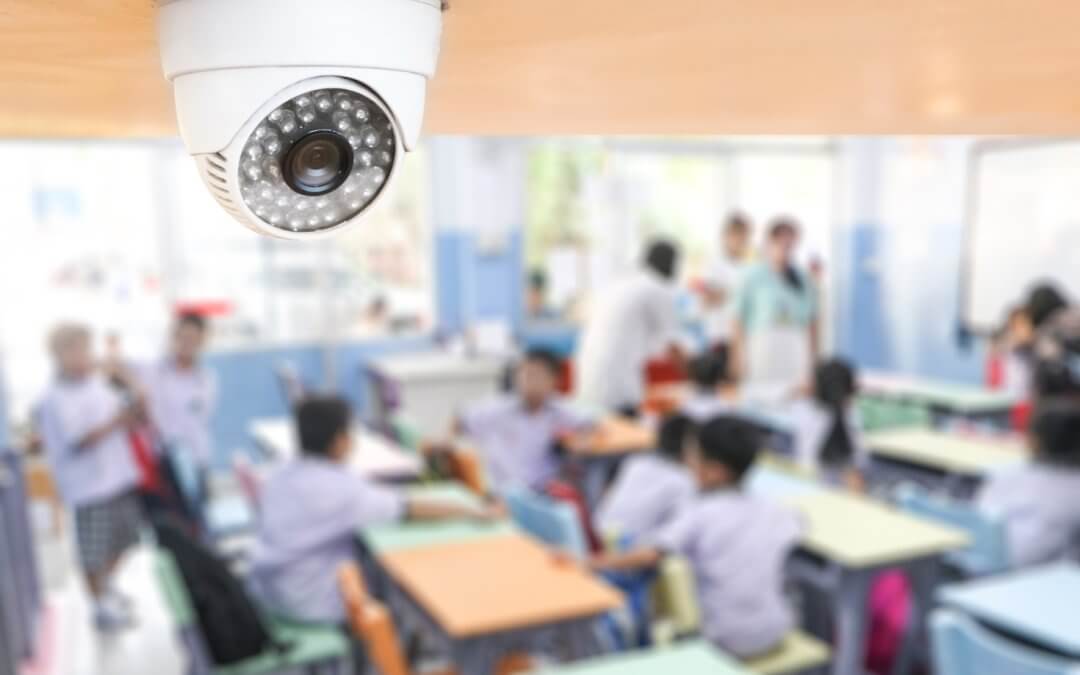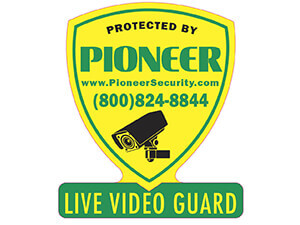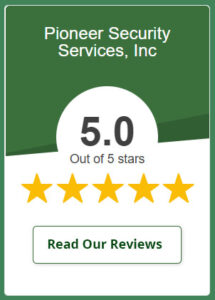That’s where modern monitoring systems come in. From CCTV cameras to intelligent access control solution and AI-powered analytics, these tools give schools and universities the ability to prevent incidents before they happen, respond quickly when emergencies occur, and maintain a safe environment around the clock.
In fact, by the 2019–20 school year, 91 percent of U.S. public schools had security cameras in place, up from just 61 percent a decade earlier. This shows how much schools have come to rely on monitoring to keep campuses safe.
Read our guide to understand how campus monitoring works, the key technologies that make it effective, and practical steps schools and universities can take to improve security.
The Essential Technologies That Keep Campuses Safe
Modern campuses rely on a combination of monitoring technologies to maintain security. These tools help detect threats early, control access, and provide real-time information to security staff. Together, they create a proactive safety system that detect incidents and improves response times.
Below are the key technologies that form the backbone of effective campus monitoring.
CCTV and IP Cameras: How They Help Monitor Every Corner
CCTV and IP cameras provide continuous surveillance across campus buildings, hallways, parking lots, and open areas. Unlike older analog systems, IP cameras transmit high-definition video over networks, allowing security teams to view multiple locations remotely and in real time. Many systems include pan, tilt, and zoom features to track moving subjects efficiently.
Additionally, modern cameras often support AI motion detection and automated alerts, which help identify unusual activity without requiring constant human monitoring. By recording and storing footage, these cameras also provide evidence for investigations, making them essential for both prevention and post-incident analysis.
A study found that robbery and theft fell 47.4% in areas with CCTV cameras, while places without cameras saw little to no change. This shows just how effective good video surveillance is at preventing crime.
Sensors and Audio Detection: Catching Emergencies Before They Escalate
Sensors detect environmental changes or security breaches that cameras alone may miss. Motion sensors, door contacts, and glass-break detectors alert staff to unauthorized entry or suspicious activity. Meanwhile, audio detection systems can identify sounds such as gunshots, alarms, or screams, triggering immediate notifications for security personnel.
These technologies work alongside cameras to create a multi-layered detection system. As a result, emergencies can be addressed more quickly, reducing potential harm and ensuring faster coordination with first responders.
How Smart Access Control Protects Students and Staff
Smart access control is a critical component of campus security because it limits who can enter specific areas and helps track movement throughout the school or university. By managing access in real time, institutions can reduce the risk of unauthorized entry, theft, or disruptive incidents.
In fact, according to the National Center for Education Statistics and the Bureau of Justice Statistics, 97% of public schools control access to school buildings during school hours. This clearly hints at how widespread and essential this practice has become.
Effective access control combines technology with clear policies, ensuring only authorized individuals can reach sensitive areas like labs, administrative offices, and residence halls.
This section explains the main tools used in intelligent access control and how they enhance safety.
Using ID Badges and Mobile Credentials for Campus Access
ID badges and mobile credentials are the most widely used methods for controlling campus entry. Each badge or credential is unique, allowing administrators to grant or restrict access to buildings, classrooms, or restricted zones. Mobile credentials, often integrated into smartphones, add convenience while maintaining security.
These systems can log entry times and locations, which is helpful for investigations or monitoring movement patterns during emergencies. Furthermore, combining physical and digital credentials increases flexibility, as temporary access can be granted to visitors or contractors without compromising overall safety.
Enhanced Safety with Biometric and Visitor Controls
Biometric access systems, such as fingerprint or facial recognition scanners, provide an additional layer of protection by verifying an individual’s identity. Unlike traditional credentials, biometric data is unique to each person, making it much harder to forge or misuse. Visitor management systems complement this by screening and logging guests, providing temporary passes, and notifying hosts upon arrival.
Together, these measures ensure that only verified individuals can enter campus facilities, while staff can quickly monitor and respond to any unusual activity. As a result, access control not only prevents unauthorized entry but also supports a faster response during incidents.
Creating a Unified Security System for Faster Response
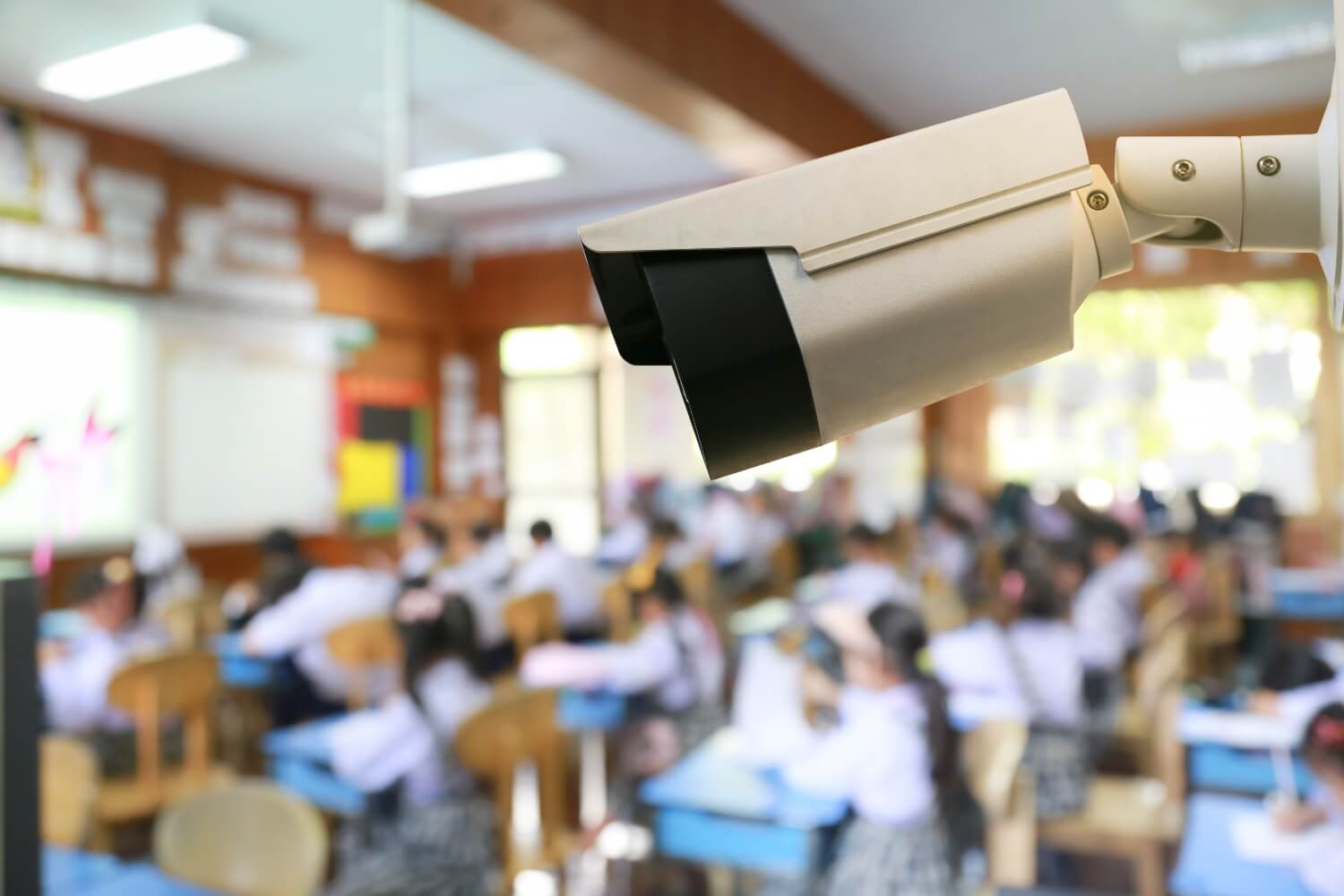
A modern campus relies on multiple security layers to maintain safety. Cameras, alarms, and access control systems are most effective when integrated, allowing staff to detect threats, respond quickly, and maintain records of incidents.
When these systems communicate seamlessly, administrators gain real-time situational awareness and can act before a small issue escalates.
Let’s see how each component contributes to a unified approach and what setup works best for campus security.
How Cameras, Alarms, and Access Control Work Together Seamlessly
A recent study found that only 17% of K–12 school staff feel their campus entrances are “completely secure.” Even though most schools have surveillance in place, many entrances aren’t fully protected.
This gap shows why integration is essential: cameras, locks, and communication systems must work together to close vulnerabilities, not just exist in isolation.
Cameras provide visual monitoring, while access control verifies and logs who enters each building. Alarms video verification personnel to potential breaches, triggering camera recordings and access control notifications simultaneously. By linking these systems, one alert can automatically prompt multiple actions: cameras focus on the location, doors lock or unlock as needed, and security staff receive instant alerts.
This coordination ensures no incident goes unnoticed, reduces response time, and improves overall safety.
Central vs. Distributed Monitoring: Which Approach Works Best
Centralized monitoring consolidates feeds and alerts into a single control room, making it easier to coordinate responses and track incidents across the entire campus. In contrast, distributed monitoring places control points at key buildings or areas, which can improve response times locally but may complicate oversight.
For most campuses, a hybrid approach (central monitoring with distributed fail-safes) provides the best balance between real-time coverage and operational efficiency.
Integration Checklist for Campus Safety Systems
To achieve seamless integration, ensure the following:
- Cameras, alarms, and access control systems are compatible with the central software platform.
- Alerts from one system automatically trigger actions in the others.
- Staff have clear protocols for responding to notifications from the integrated system.
- Data from all systems is logged consistently for audits and investigations.
- Regular tests confirm that integration functions correctly under real-world conditions.
By following this checklist, your campus can operate a security system where all components support each other efficiently and reduce blind spots, while improving safety for everyone.
Using AI to Detect Threats Early and Effectively
Artificial intelligence has transformed campus security by enabling faster detection and smarter responses. A study from the University of Tulsa found that AI systems can reduce incident response times by up to 70% compared to traditional methods. This demonstrates how much faster and more efficient AI makes campus security.
AI systems analyze live video feeds, sensor data, and access logs in real time, allowing security teams to identify potential threats before they escalate.
A study published in the Journal of Cybersecurity found that AI systems can reduce incident response times by up to 30% compared to traditional methods. This demonstrates how much faster and more efficient AI makes campus security.
These tools go beyond traditional surveillance, providing actionable insights that improve both prevention and response. By integrating AI into monitoring systems, schools and universities can reduce human error, optimize resources, and respond more efficiently to incidents.
Let’s take a look at how AI addresses key security challenges on campus.
How AI Helps Identify Suspicious Behavior Quickly
AI analyzes patterns in real time to spot behavior that deviates from normal campus activity. For example, lingering in restricted areas, repeated attempts to access locked doors, or carrying unusual items can trigger immediate alerts.
By highlighting these anomalies, AI allows security staff to intervene early, preventing theft, vandalism, or safety breaches. Additionally, continuous learning enables the system to adapt and improve detection over time.
Automated Detection of Emergencies and Critical Incidents
AI systems can automatically recognize emergencies, including fights, medical incidents, or fire hazards, by analyzing video and audio data. Once detected, alerts are sent instantly to security teams, which reduces response time and ensures coordinated action.
Other than that, these systems operate around the clock, even in areas without constant human supervision.
People Counting and Crowd Management with AI
AI monitors the number of people in specific areas to prevent overcrowding and improve overall campus safety. By analyzing movement patterns, security teams can identify congestion points and direct traffic flow during events or peak hours.
This technology also helps during emergencies, as administrators can prioritize evacuation routes based on real-time crowd data, improving both safety and operational efficiency.
Reducing False Alarms and Improving Accuracy
Advanced AI distinguishes between genuine threats and irrelevant movements, such as shadows, weather effects, or small animals, significantly reducing false alarms. As a result, security teams can focus on real incidents without being distracted by unnecessary alerts.
Moreover, machine learning continuously refines detection accuracy and guarantees that alerts remain precise over time. This minimizes interruptions and maintains a secure campus environment.
How Monitoring Systems Respond Quickly During Emergencies
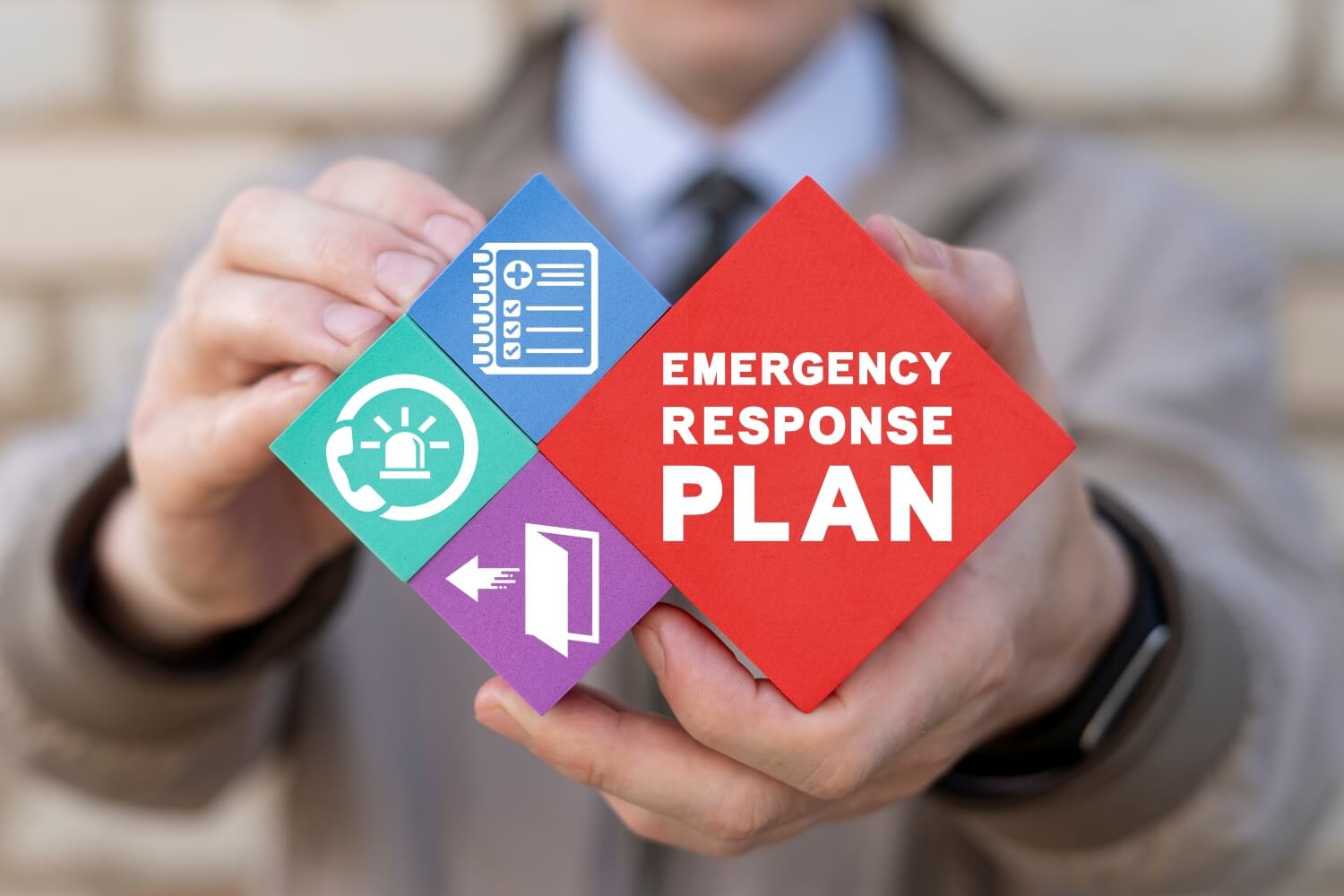
Campus emergencies require immediate action, and monitoring systems provide the speed and coordination necessary to protect students and staff. By linking sensors, cameras, and communication tools, these systems detect incidents as they happen and trigger responses without delay.
The U.S. Government Accountability Office reports that about 95% of school districts nationwide have emergency operations plans. This shows that schools take preparedness and quick responses very seriously.
Quick intervention can prevent injuries, limit property damage, and ensure a safe environment.
Let’s see in detail how automated actions and responder coordination make emergency management more effective.
Automated Lockdowns, Evacuations, and Alert Systems
Monitoring systems can initiate lockdowns or evacuation procedures automatically when a threat is detected. Alerts are delivered through:
- Public address announcements for clear instructions
- Mobile notifications to reach students and staff instantly
- Visual signals, like flashing lights, for immediate awareness
These automated measures reduce the chance of human error and standardize responses across campus buildings. Additionally, every action is logged, allowing security teams to review procedures, identify gaps, and improve protocols for future incidents.
Coordinating With First Responders for Faster Action
Monitoring systems integrate with local emergency services to provide live video feeds, sensor alerts, and precise location data. This allows first responders to understand the situation before arriving, improving efficiency and decision-making. Moreover, secure communication channels guide responders directly to affected areas, saving valuable time and reducing risks during critical incidents.
How Mobile Safety Tools Help Students & Staff to Improve Campus Security
Mobile safety tools provide a direct line of communication between campus security and the community, enhancing situational awareness. These applications allow students and staff to report concerns instantly, receive alerts, and access guidance during emergencies.
With the help of faster response, these tools reduce risks and improve overall campus safety.
Panic Buttons and Instant Alerts
Mobile panic buttons let users notify security immediately when a threat arises. Once activated, the system shares precise location details, ensuring rapid intervention. Consequently, incidents such as medical emergencies or suspicious behavior can be addressed before they escalate, which protects both individuals and property.
Anonymous Reporting for Confidential Concerns
Anonymous reporting features encourage users to share safety concerns without fear of retaliation. This helps administrators uncover issues that might otherwise remain hidden. Additionally, it promotes a culture of transparency and trust, which is critical for effective campus security.
Two-Way Communication and Real-Time Updates
Two-way communication keeps the campus community informed during emergencies. Some of the key features include:
- Alerts for lockdowns or evacuation routes
- Step-by-step guidance to avoid danger zones
- Direct messaging with security personnel for urgent assistance
With the combination of these features, mobile safety tools empower students and staff, strengthen incident reporting, and significantly improve the efficiency of campus security operations.
How Students & Staff Can Balance Safety With Privacy and Ethics
Maintaining campus security is essential, but it should not come at the cost of student and staff privacy. Schools and universities can apply safety measures while following ethical guidelines, making sure security practices protect the community without creating fear.
Here are some key strategies to balance safety and privacy:
- Transparent Surveillance Practices: Clearly communicate where cameras and sensors are placed and what they monitor. This keeps the campus community informed and reduces concerns about hidden surveillance.
- Data Protection Measures: Ensure that recorded footage, access logs, and mobile app data are securely stored and accessible only to authorized personnel.
- Limit Monitoring in Sensitive Areas: Avoid placing cameras in bathrooms, changing rooms, or private staff areas to respect personal boundaries.
- Anonymized Reporting: Encourage anonymous tips for suspicious behavior, allowing concerns to be reported without compromising individual identities.
- Regular Policy Reviews: Update privacy policies regularly, considering changes in technology, legal requirements, and community expectations.
Protect Every Corner of Your Campus with Pioneer Security
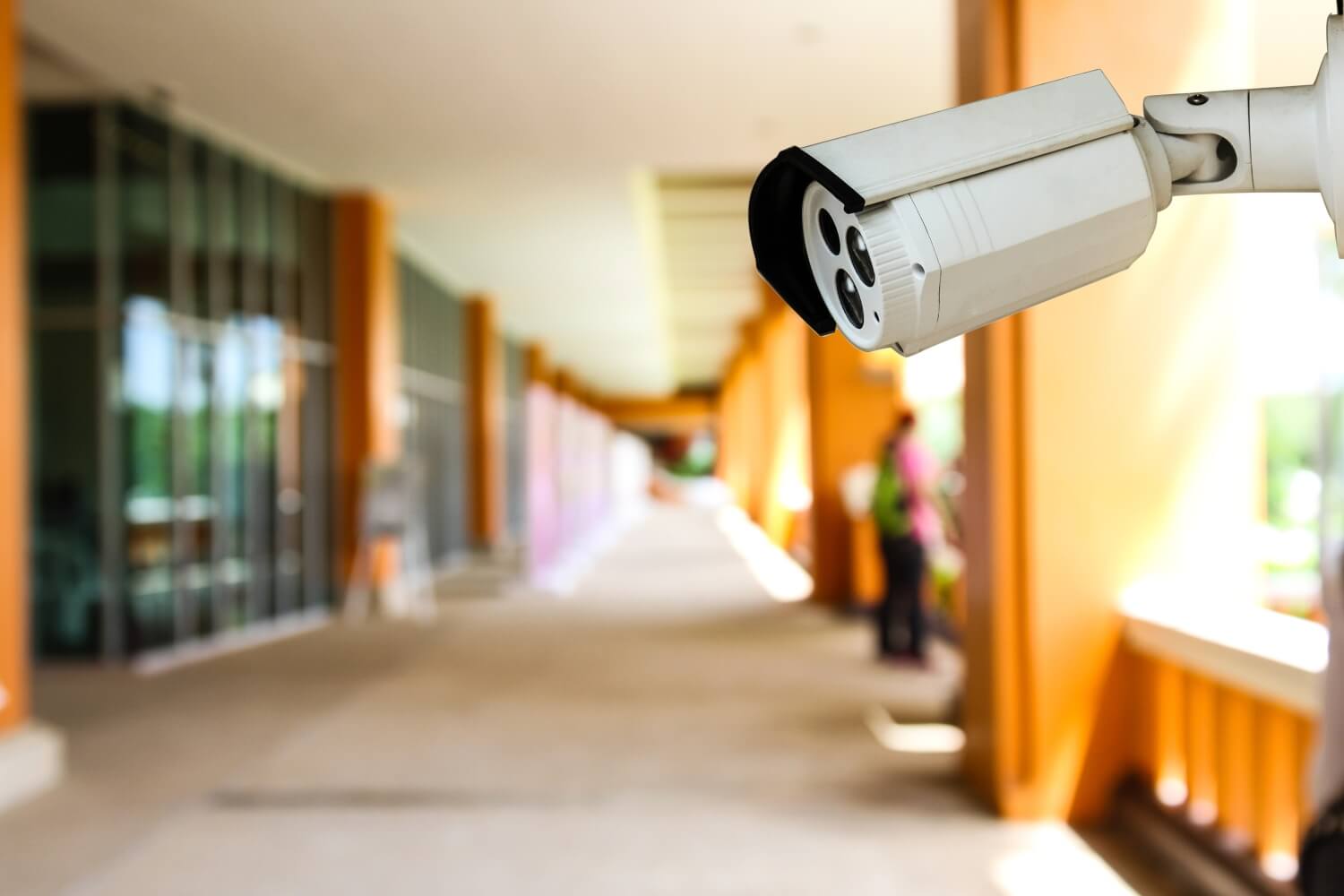
Campus safety requires more than basic security measures. Schools and universities need a strong strategy that blends advanced monitoring systems, trained staff, and clear communication. Modern tools like AI-powered analytics, mobile safety apps, and well-placed surveillance can detect threats early, guide responses, and create a safer environment for everyone on campus. Strong security isn’t just a precaution; it’s an investment in student and staff well-being.
To make these strategies work in real-world settings, campuses need technology partners who understand the complexity of educational environments and can deliver reliable, scalable solutions.
Pioneer Security helps schools and universities strengthen their safety strategies with fully integrated security solutions. Their offerings include high-definition surveillance systems, advanced access control, and real-time monitoring technology that gives teams the insight they need to respond quickly. Administrators looking to create a safer, more secure campus can explore tailored solutions that meet unique challenges.
Visit Pioneersecurity.com to see how their expertise and technology can protect your school with precision and reliability.
Frequently Asked Questions
How could your school’s safety and security responses be improved?
Schools can improve safety by securing entrances, adding better lighting, and running regular emergency drills. Open communication between students, staff, and local authorities also helps respond faster when incidents happen.
What is a security monitor for school?
A security monitor keeps an eye on the school to make sure students and staff are safe. They patrol grounds, watch surveillance feeds, handle incidents, and coordinate with school leaders when problems arise.
How does campus security ensure safety?
Campus security uses cameras, access controls, and emergency communication tools to maintain a safe environment. Officers patrol the campus, enforce rules, and work with local law enforcement to prevent and respond to threats.
Why is a school alarm system important?
A school alarm system alerts everyone immediately during fires, intruders, or other emergencies. It helps staff and students act quickly, evacuate safely, and get emergency services on the scene without delay.
What technologies are most effective for improving campus security?
The most effective campus security systems combine multiple technologies. Surveillance cameras cover key areas, access control systems restrict entry to authorized individuals, and alarms alert staff to emergencies. AI-powered tools help detect unusual activity, while mobile safety apps allow students and staff to report concerns instantly.
How can schools protect student privacy while using security systems?
Schools can maintain safety without compromising privacy by placing cameras only in public areas and avoiding sensitive locations like bathrooms or private offices. Data should be stored securely, and access should be limited to authorized personnel. Clear communication about what is monitored and why helps build trust while keeping the campus secure.
How do emergency response plans work with campus monitoring systems?
Emergency response plans work hand in hand with monitoring systems to keep everyone safe. Alarms, cameras, and AI alerts quickly notify security staff of incidents. Mobile apps and two-way communication tools provide real-time updates to students and staff, helping them follow evacuation routes or lockdown procedures effectively.

